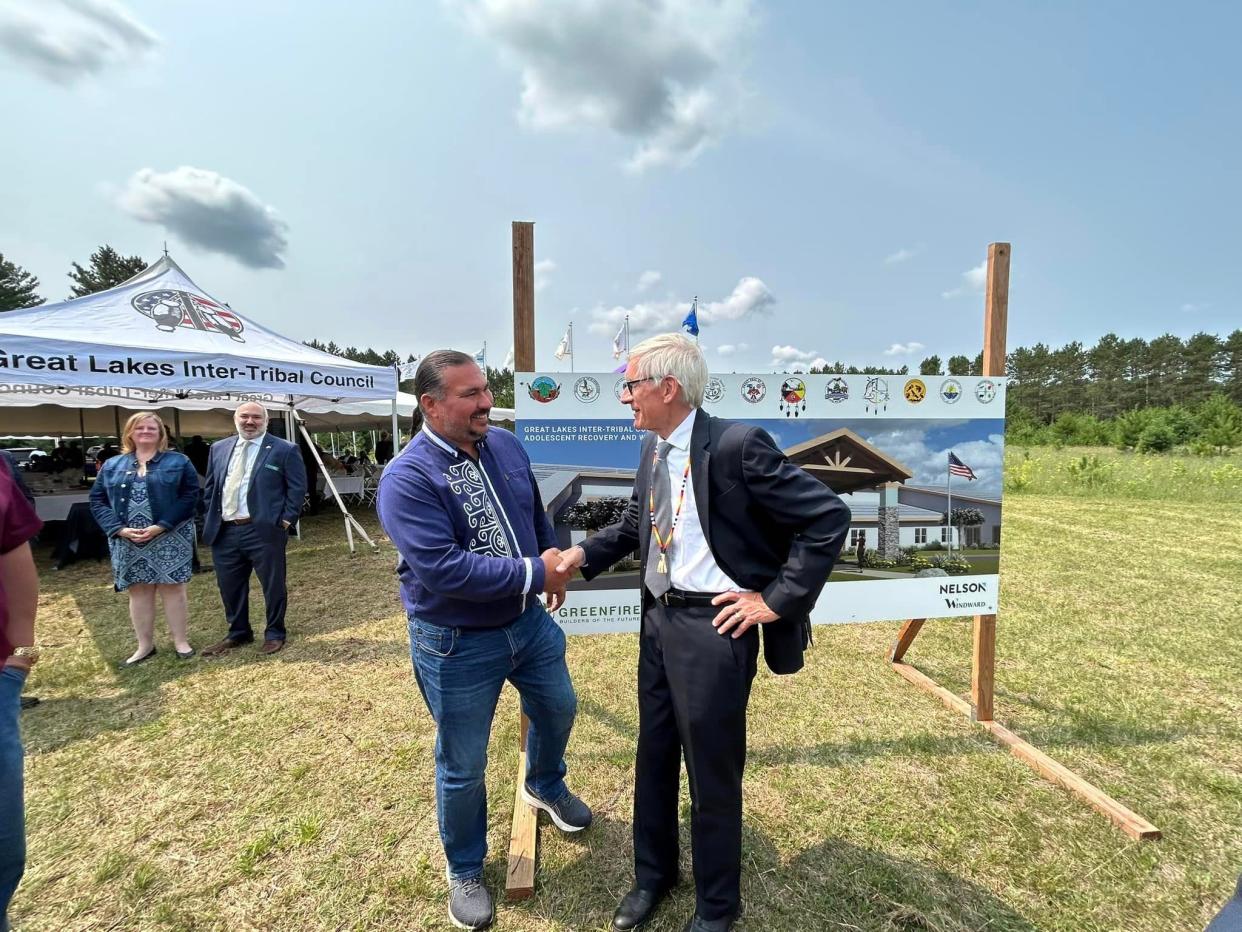Native youth drug treatment center in Wisconsin to focus on building cultural identity

One solution many people in Indian Country turn to these days to help alleviate social problems is to guide people back to their roots.
Tribal officials in Wisconsin are hoping cultural revitalization will help lower the high rates of Native youth addicted to drugs.
“I think really to help stem that is to build cultural identity,” Oneida Nation Chairman Tehassi Hill said. “It’s about learning who they are and who their ancestors are to help build responsibility.”
Hill, tribal officials from across the state and the Great Lakes Inter-Tribal Council and Gov. Tony Evers attended a ground blessing this week for a youth substance abuse treatment facility in northern Wisconsin.
Hill said he thinks the planned $8 million, 36-bed Adolescent Recovery and Wellness Center in Tomahawk will be the first of its kind in the Midwest that focuses on providing culturally relevant treatment services to Native youth.
Hill said he’s heard anecdotally from tribal officials in other parts of the country that this type of cultural treatment service has been successful in steering youth to recovery.
The plan to build the ARWC started in 2017 under Gov. Scott Walker's administration, when the state Legislature approved giving $200,000 from tribal gaming revenue to the Stockbridge-Munsee Mohican Nation to assess the feasibility of the project.
In 2019, the Legislature approved $640,000 from tribal gaming revenue to pay for the center's architectural plans, led by the Great Lakes Inter-Tribal Council.
Native youth are two times more likely to use opioids for nonmedical purposes, compared to non-Native youth, the Inter-Tribal Council said.
More by this reporter: 'It's like having grandma or grandpa in their pockets': Elders working to preserve Ho-Chunk language
From 1999 to 2015, the death rate from opioid overdoses increased by more than 500% for Native Americans, according to the U.S. Department of Health and Human Services.
Tribal health advocates agree that generational trauma from decades of forced and unforced assimilation have led to high rates of addiction. They point to the cultural revitalization in recent years in Indian Country as a way to heal communities.
The Indian Health Service funds 12 Native youth substance abuse treatment centers in the U.S., with the closest one to Wisconsin in South Dakota.
Two facilities in Wisconsin provide substance abuse services for youth, but neither accepts Indian Health Service reimbursements.
The ARWC in Wisconsin also will be open to non-Native youth, but Native youth will be prioritized. About 8.7% of Wisconsin residents have a substance abuse disorder, exceeding the national average of 7.6%. Last year, more than 1,800 people in Wisconsin died from an overdose.
The center will be tribally owned and operated to maximize federal assistance available to tribes. It'll provide evidence-based medical treatment “to treat the person, not the substance.”
The average stay for a patient at ARWC will be 40 days. It will serve children between ages 13 and 17.
Officials hope to break ground this fall, once permits are approved.
Frank Vaisvilas is a former Report for America corps member who covers Native American issues in Wisconsin based at the Milwaukee Journal Sentinel. Contact him at fvaisvilas@gannett.com or 815-260-2262. Follow him on Twitter at @vaisvilas_frank.
This article originally appeared on Green Bay Press-Gazette: Wisconsin tribes to operate youth drug treatment center in Tomahawk
